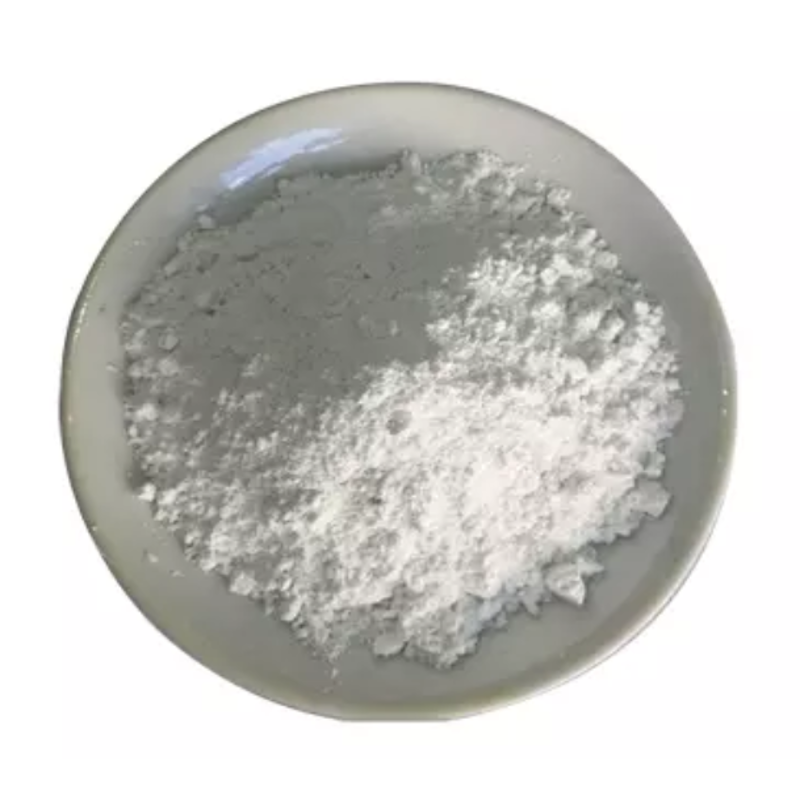-
Categories
-
Pharmaceutical Intermediates
-
Active Pharmaceutical Ingredients
-
Food Additives
- Industrial Coatings
- Agrochemicals
- Dyes and Pigments
- Surfactant
- Flavors and Fragrances
- Chemical Reagents
- Catalyst and Auxiliary
- Natural Products
- Inorganic Chemistry
-
Organic Chemistry
-
Biochemical Engineering
- Analytical Chemistry
-
Cosmetic Ingredient
- Water Treatment Chemical
-
Pharmaceutical Intermediates
Promotion
ECHEMI Mall
Wholesale
Weekly Price
Exhibition
News
-
Trade Service
Principles of digital PCR and its benefits
As an absolute nucleic acid quantification technique, digital PCR (dPCR) does not require a standard curve and has the characteristics
of high sensitivity and good linearity.
Similar to the cell line isolation construction of single-cell clones, dPCR uses a finite dilution method to disperse nucleic acid solutions into reaction units (droplets, chip microreactors, or microplate wells) so that the number of nucleic acid templates per reaction unit is ≤1, and the number of
nucleic acid templates can be determined by fluorescence signal after PCR reaction cycles.
dPCR is usually divided into droplet digital drop RCR (ddPCR) and chip digital PCR (cdPCR), because cdPCR is complex and costly, while ddPCR has the characteristics of simple operation and high throughput, so ddPCR is becoming more and more popular, especially focusing on cancer diagnosis direction that screens a small number of mutation sites in the background of a large number of WT DNA
.
This time we will introduce a technical method
for KRAS site mutation in colorectal cancer using centrifugal microfluidic 4-fold ddPCR technology.
Mediator Probe PCR experimental principle
Figure 1 Mediator Probe and Universal Reporter structure
The experimental design cleverly uses two oligonucleotides
, the Mediator Probe (MP) and the Universal Reporter (UR).
The 5' region of the vector probe is the gene sequence that binds specifically to the UR, i.
e.
, mediator, and the 3' end is the target-specific binding region, or probe, which can specifically bind to gene loci
.
The universal probe 5' end is a stem ring-shaped hairpin secondary structure, the 5' end is linked with a quencher group, and the opposite end is connected with a fluorophore, and the fluorophore and quenching group are spatially close together, and sufficient fluorescence resonance energy transfer (FRET) is carried out by the imine connecting the two, thereby quenching
the fluorescence after fluorophore excitation.
Figure 2 Schematic of a PCR reaction using the media probe MP
During PCR, after DNA denaturation forms a single strand, the media probe MP binds to the DNA-specific sequence (Figure 2C) and is lengthened by polymerase and primers; When the polymerase crosses the position of the MP, it has an exonuclease activity that cuts off the 5' end of the MP Mediator and releases it into solution (Figure 2D), and the Mediator gradually accumulates as DNA replicates; The Mediator diffuses in solution and is trapped and bound by the hybridization site of the universal probe UR (Figure 2E) and extends the 3' end of the Mediator under the action of polymerase, and when the hairpin structure is reached (Figure 2F), the quencher and fluorophore are separated by two possible ways, one by cutting the quencher directly (Figure 2G) and the other by loosening the hairpin structure and opening it (Figure 2H), both ways finally de-quenching the FRET of the fluorophore, Fluorescence can be detected in the corresponding detection instrument, so that nucleic acid concentration
can be quantified indirectly by fluorescence.
The unique advantage of Mediator Probe PCR experiments is that they can be expanded to multiplex fluorescently labeled targets and the target color scheme is not fixed, so it can be easily adjusted
to different applications.
Using this method, the authors designed 4 sets of MP and 4 fluorophore-labeled UR probes for screening assays of 3 different gene mutation sites and WT gene loci during ddPCR
.
ddPCR experimental design and condition optimization
Due to the small size of ddPCR, the easy evaporation of microdroplets, and the easy fusion of droplets after the PCR process and the end of the process, PCR Mix emulsified oil, PCR-oil, and the surfactants therein must be carefully selected and concentrated optimized to ensure the stability of the droplets during droplet production and during PCR thermal cycling to avoid evaporation and fusion
.
LabDisk's 12-bit ddPCR platform features high throughput, combined with Lionheart's automatic microscopy imaging system and Gen5 high-content analysis software, with automatic image capture and custom analysis pipeline settings, which is ideal for primer and probe concentration exploration, and different experimental target detection sensitivity verification
.
Figure 3 Lionheart LX and Gen5 software paired with a fully automated fluorescence capture and analysis workflow for LabDisk fully automated 4-plex ddPCR droplets
In the experiment, mutant DNA was diluted into 4 concentrations: 3540, 354, 35, and 3.
5 copies (cps) per reaction for each mutant target, while wild type DNA concentrations were fixed at approximately 15,000 cps/reaction
。 After the PCR reaction was accepted, 12 ddPCR units were cropped and pasted on a slide, 56 field of view Montage scans were performed using a 2.
5x objective, and the Gen5 software was stitched with the following scan parameters: GFP, RFP, Texas Red, and CY5 channels were used to capture FAM-labeled WT targets, HEX-labeled KRAS G12V point mutations, AttoRho 101-labeled KRAS G12A point mutations, and Cy5, respectively Fluorophore-labeled KRAS G12D sequence
.
Table 1 Lionheart Auto Shooting Parameter Settings
Gen5 software can often be used for cell and organelle count analysis, where, slightly adjusted, it is used for droplet counting and positive and negative droplet discrimination
.
Specific parameters include background fluorescence determination, droplet diameter range (45um ~ 90um), droplet shape (roundness >0.
6) and fluorescence intensity threshold
.
The 2 parameters of roundness and mean fluorescence intensity are essential when performing subpopulation analysis to distinguish between positive and negative droplets, and it is important that roundness is used as an analytical parameter to effectively exclude dust particles or other impurities
.
Since the GFP channel has the highest droplet background signal, it can be used to detect and calculate the total number of droplets, with each remaining channel analyzing different mutation sites as a subpopulation
.
Figure 4 Example diagram of the Gen5 Automated Microdroplet Analysis Pipeline
Experimental data analysis and publication of results
Figure 5 Centrifugal microfluidic ddPCR image and brightfield droplets
As mentioned above, the 12 units not only allow a large number of reactions in a single diagnostic application, but also efficiently optimize droplet stability parameters
.
At 2% surfactant concentration, uniform droplets are produced, but during the PCR cycle phase, the oil evaporates completely, resulting in a large number of droplet fusions
.
Figure 6A shows the fusion of microdroplets due to the absence of surfactants, which show brighter brightness
.
Figure 6 Assessing surfactant concentrations in emulsified oil and PCR-oil
Since the evaporation of oil also depends on the parameters of the PCR cycle, including temperature and number of cycles, the concentration of surfactant can be optimally adjusted for different experimental conditions, and in this experiment, the surfactant concentration of 4% and 6% is a good guarantee of droplet generation and stability during PCR, while lower or too high will produce droplet fusion
.
The fluorescence picture has a higher contrast than brightfield, and 6000 droplets are measured fully automatically using Gen5 software during the droplet assay stage, with an average diameter of 82.
7±9 um, which calculates that a 10ul PCR mix can produce approximately 35,000 droplets
。 Through calculations and curve fitting, it can be found that each mutation target has a very high linearity (R2=0.
99) and reaches the limit of detection (LoQ) of 35 cps/reaction, and even lower concentrations of KRAS G12V and KRAS G12A mutations to 3.
5 cps/reaction
can be detected.
Figure 7 Microdroplet multicolor fluorescence overlay shooting and nucleic acid concentration analysis
Table 2 Statistics for calculating DNA concentrations at different targets
By using 4-plex ddPCR combined with the Lionheart automated microscopic imaging platform, the excellent experimental data also demonstrate the high sensitivity of this technology, and also demonstrate the potential
of its application in cancer screening.
Interested partners come and take advantage of Agilent BioTek's Lionheart series and Cytation series fully automated imaging systems around you!
References
1、Mediator probe PCR: a novel approach for detection of real-time PCR based on label-free primary probes and standardized secondary universal fluorogenic reporters.
Clin Chem.
2012 Nov; 58(11):1546-56.
2、Fluorescence signal-to-noise optimisation for real-time PCR using universal reporter oligonucleotides.
Anal.
Methods 2018, 10, 3444–3454.
3、Centrifugal Microfluidic Integration of 4-Plex ddPCR Demonstrated by the Quantification of Cancer-Associated Point Mutations.
Processes 2021, 9, 97.
About BioTek
BioTek is the world's leading developer and manufacturer of multifunctional microplate detectors and software for 54 years
.
BioTek's Synergy series of multifunctional microplate testers provide a convenient and efficient user experience
with flexible function configuration and excellent test results, combined with friendly and powerful operating software.
Serving science and promoting science has always been our goal
.
In 2019, BioTek joined Agilent Technologies as a key member
of the Cell Analysis Group.
About Agilent
Agilent Technologies Inc.
(NYSE: A) is a global leader in the life sciences, diagnostics, and applied chemistry markets, providing insight and innovation to improve quality of life
.
Agilent's instruments, software, services, solutions, and experts provide more reliable answers
to our customers' most challenging challenges.
In fiscal 2021, Agilent generated revenues of $5.
34 billion and employed 16,400 people worldwide
.







